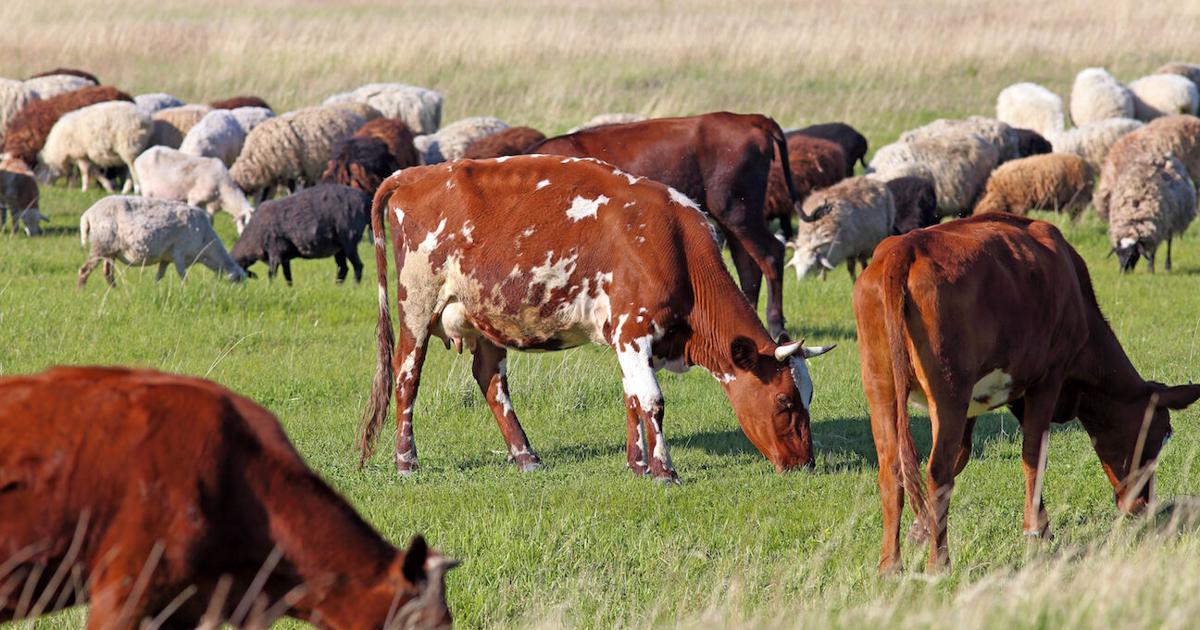In relation to local weather change, are cows as unhealthy as vehicles? In all probability not, says Dr. Frank Mitloehner, College of California, Davis researcher and air high quality specialist. He asserts that meat and dairy animals usually are not main drivers of local weather change they usually would possibly properly be a part of the answer.
Wait, what?
Folks have many causes to restrict or remove animal meals from their weight loss plan, Mitloehner explains, “but when curbing local weather change is one in every of them, they’re being deceived by misinformation that places undue blame on animal agriculture. In actuality, it’s the burning of fossil fuels that poses the most important menace to our planet. Campaigns that rally in opposition to animal protein by inflating their local weather affect function smokescreens, diverting consideration away from the principle local weather menace.”
In brief, says Mitloehner, methane — the greenhouse fuel (GHG) produced by ruminants resembling cattle and sheep — is exclusive. Methane is a “circulation” fuel, which means, as it’s emitted, it’s also being destroyed within the ambiance in a 12-year cycle. Conversely, carbon dioxide — the principle GHG from business, transportation and the manufacturing of electrical energy — is a “inventory” fuel. It accumulates within the surroundings for a thousand years or extra.
We have to take steps to decrease all GHG emissions, says Mitloehner. However by far, essentially the most urgent is C02, which accounted for 79% of GHG emissions in the US in 2020, in response to the Environmental Safety Company. Methane from livestock, landfills and rice manufacturing accounted for 11% of complete emissions throughout the identical interval.
Each meals, whether or not raised in a pasture, planted and harvested with farm gear, or manufactured in a lab, has a carbon footprint, says Mitloehner. And clearly, some manufacturing practices are higher than others.
In her ebook, “Defending Beef: The Ecological and Dietary Case for Meat,” environmental lawyer Nicolette Hahn Niman explains that carbon resides in soil. And at any time when soil is disturbed for any motive, it’s launched into the ambiance as carbon dioxide.
Grazing animals — domesticated or wild — add carbon again to the soil the place it belongs (by way of manure). And when appropriately grazed, the motion of their hooves assist retailer extra carbon into the soil, which makes it obtainable for vegetation to develop, which supplies meals for animals, which give meals for us. And so the cycle goes.
However shouldn’t we use that land to develop extra crops? In response to a current article in Nationwide Geographic, between 20% and 40% of our earth consists of pure vary and grasslands that should be protected against plowing and improvement. That’s as a result of, like forests, the lands retailer carbon and maintain it from being launched into the ambiance. How attention-grabbing that grazing animals may very well assist the environment whereas producing a nutrient-rich meals.
Out of house once more. Learn extra at CLEAR (Readability and Management for Environmental Consciousness and Analysis) at clear.ucdavis.edu.
(Barbara Intermill is a registered dietitian nutritionist and syndicated columnist. She is the creator of “Quinn-Important Vitamin: The Uncomplicated Science of Consuming.” Electronic mail her at barbara@quinnessentialnutrition.com.)
©2022 MediaNews Group, Inc. Go to at monterreyherald.com. Distributed by Tribune Content material Company, LLC.
Comments
0 comments
